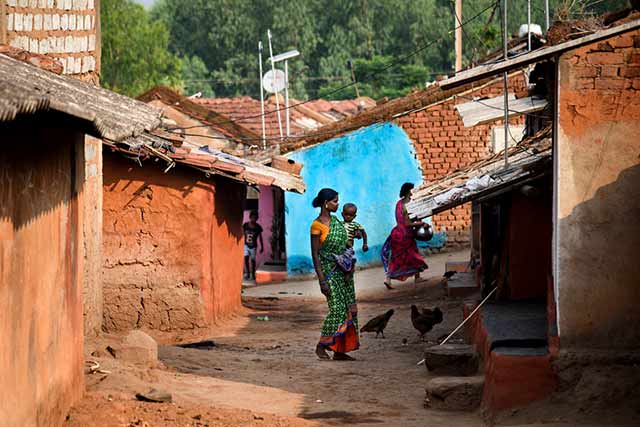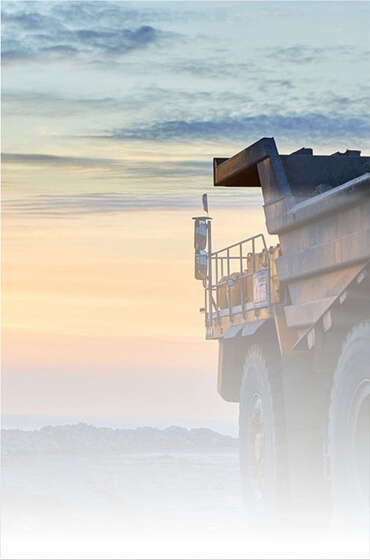— Odisha is one of the mineral-rich states and has billions of rupees collected under the District Mineral Foundation (DMF) funds which according to the law are to be used for the welfare of the mining-affected communities.
— Instead, the DMF funds are either being used for works that have nothing to do with the welfare of mining-affected communities like the creation of a stadium or diverted for urban areas.
— Experts note that Odisha has more than Rs. 110 billion under the DMF funds but they are yet to find their way to the mining-affected communities.
During the latest budget Session of Odisha’s Legislative Assembly, the Odisha government’s Cabinet in March 2021 approved several proposals but the one that raised eyebrows was to use the District Mineral Foundation (DMF) funds, meant for the mining-affected community in the Sundergarh district, for construction of an international stadium in Rourkela town.
The proposed international stadium has been envisioned to host the Men’s Hockey World Cup 2023. This misuse of the DMF funds is not a one-off incident, but there have been many similar trends over the years. In 2017, in the Jharsuguda district, the district administration sanctioned works related to the power supply to the Jharsuguda airport with an investment of more than Rs. 20 crore (Rs. 200 million) squeezed from the DMF funds.
In another mining district of Keonjhar, the district administration in 2019-20 sanctioned works for a handball stadium, and invested around Rs 500,000 for a patient facil
itation centre for Cuttack-based medical college which is around 200 kilometres away from Keonjhar.
In January 2020, the administration of the Sundergarh district bought 25 cars with the DMF funds for them to be used as patrolling vans by the police in Rourkela city, a non-mining affected area. Earlier, even integrated traffic management was sponsored with the DMF funds. In the same district, the DMF funds were also used to construct the boundary walls of the Circuit House.
The list of instances where the DMF funds were used for works that had nothing to do with the welfare of the mining-affected communities goes on. This, experts warn, is worrisome because this comes at a time when the state’s own people living in the mining-affected areas are crying for attention and seeking help for basic amenities in their areas after living in poor and vulnerable conditions for decades.
This is important because according to the Union Coal and Mines Minister Pralhad Joshi, Odisha has seen the highest collection of Rs. 11,984 crore (RS. 119.84 billion) as DMF collections from the miners operating in the state since the inception of funds in 2015.
The Odisha government recently told the state Assembly that the DMF collections in the state are rising in the state. While it was Rs. 395.44 crore (Rs. 3.95 billion) in 2015-2019, in 2019-20 the total annual collections stood at Rs. 3,079.20 crore (Rs. 30.79 billion).
Though Odisha has a significant amount of the DMF funds what is probably lacking is the provision of transparency related to their use. For instance, Rule 16 of the Odisha DMF Rules talks about sharing the annual report of the DMF trust on its website but hardly any annual reports have been uploaded online for several years.
Odisha’s DMF Rules mandates the usage of 60 percent of the funds in priority areas while 40 percent of them could be used in non-priority areas. The non-priority areas included investments in physical infrastructure, irrigation, energy and watershed development, afforestation and others.
Queries sent to P.K. Jena, who is the Odisha government’s secretary for the planning and convergence department, regarding the diversion of DMF funds for other purposes remained unanswered.
Pranav Sachdeva, a lawyer with the Supreme Court who has handled many mining cases in the apex court emphasised that Odisha and many states have attempted to dilute the very concept of the DMF funds by diverting it to areas other than the mining-affected areas.
“As mining firms grow, the local community impacted by mining does not get any benefit from the money collected … in fact the local environment is impacted too. But the governments often diverts these important resources away from the vulnerable community. They try to use the DMF funds for works where ideally budgetary allocations should have been used. These funds were planned for the upliftment of the affected community for their health, education, livelihood and others and many portions land in urban areas,” he said.
The pollution mess in the mining-affected areas of Odisha
According to the 2011 Census, about 1.62 million people (50 percent) in the Sundergarh district belong to Scheduled Tribes and many live in rural areas. This area is adjacent to the Chhattisgarh border and known for coal mining and other minerals for decades. But what is consistently ignored is the plight of the communities impacted by mining.
For instance, Naresh Meher, a resident of Ratanpur village in Gopalpur panchayat in Sundergarh district, said that people in his village are living in pathetic conditions due to mining taking place about 10 kilometres away. He said that the levels of air pollution, water pollution and sound pollution have taken a huge toll on his village.
“Around 3,000 trucks cross our village every day. Thick levels of dust often engulf our standing crops while polluted water is discharged from the handpumps. Several of the citizens here live with skin diseases, cancer and other diseases triggered by mining activities,” said Meher, who himself is tuberculosis (TB) patient.
But this is not the end of their poor fate as his village is now listed to be taken away for mining.
Social activist Suru Mishra from Sundergarh said that in the Hemgiri block in the district, a stretch of 25 kilometres of road connects the mining centres of Sundergarh with Chhattisgarh and passes through several villages but even then the roads are in extremely bad shape.
“You cannot walk on that road. Only trucks and heavy vehicles run on that road. There are very big potholes and the whole stretch gets waterlogged making it very difficult for the local communities to commute or for kids to use that to go to schools,” Mishra told Mongabay-India.
Both, Meher and Mishra, said that these areas and many other mining-affected areas need government attention to improve their standards of lives. They also said that the Hemgiri Community Health Centre (CHC) is still deprived of a digital X-ray facility and ultrasound facility and other medical facilities but the government has spent several portions of the DMF funds in boosting the District Headquarter Hospital (DHH), which is in an urban area.
The provision of DMF funds – to be collected from miners – were introduced in January 2015 by the government of India through an amendment in the country’s mining laws for all districts affected by mining-related operations.
In the Talcher region of the Angul district, the villagers living in areas close to the coal mining and coal washery units are left to suffer from the discharge of untreated water directly into the farmlands of the village. Similarly, in the Bansapal and Joda blocks of the Keonjhar district, the villagers are facing the crisis of polluted groundwater, a result of mining activities. This has also forced many women to walk for miles every day to fetch drinking water.
How Odisha’s DMF funds are being diverted for other purposes?
Experts working on the issue of mining in Odisha and other states claim that the DMF funds are now easily diverted for other priority areas and urban areas despite it being illegal and mining-affected communities crying for help.
Sankar Prasad Pani, a lawyer with the National Green Tribunal (NGT) said, “In districts like Keonjhar, the salaries of doctors are now being paid through the DMF funds which should ideally be coming from the state’s budgetary allocations.”
“Collectors find the DMF funds sometimes hard to dispense and thus divert it for numerous urban-centric works. But they are not annual budget funds, they can be accumulated and do not lapse. They can be used when needed. The need is to make priority-based plans to aid the mining-affected people,” he said.
Ramesh Agarwal, a leading Indian environmentalist based in Raigarh in Chhattisgarh said, “The rules of DMF have been framed in such a way that the district collector gets the power to sanction the DMF funds with the approval of the local DMF committee. In many states, we have seen diversion of the funds to other areas which is not going to affect the mining hit communities,”
A study conducted by the New Delhi-based think tank Centre for Science and Environment (CSE) on the usage of DMF funds in different mining districts of Odisha found that despite lower social and health indicators the allocation of DMF funds on the issue of livelihood and other areas had not been much, say for example in Sundergarh district.
“In Sundergarh, one of Odisha’s top mining districts, a negligible Rs. 3 crore (Rs. 30 million) has been provided for child development out of the district’s Rs. 745 crore (Rs. 7.45 billion) sanctions. This is at a time when under five Mortality Rate in rural areas of the district is as high as 67, and nearly 50 percent of the children below this age are victims of stunted growth,” the report said.
Srestha Banerjee, Programme Head, International Forum for Environment, Sustainability & Technology (iFOREST), who played a key role in producing the CSE report, said the constitution of the DMF committee in the districts is one of the main problems.
“The DMF Committee in the districts have been formed in such a way that the local politicians including the parliamentarians and legislators exert more power in the decision making on the spending of the DMF funds in their areas. The mining laws permit the administration to use part of the DMF funds for administration works, but when the mining hit communities need attention for their upliftment and diversion of these funds to urban areas and for other similar works sounds less logical,” Banerjee told Mongabay-India.
She said that livelihood and income generation of the rural poor population living in the mining-affected areas need to get a priority under the DMF fund allocations. She also demanded that the DMF funds should be spent based on priority areas rather than in a haphazard manner as it is happening presently in many mining districts of Odisha.




































